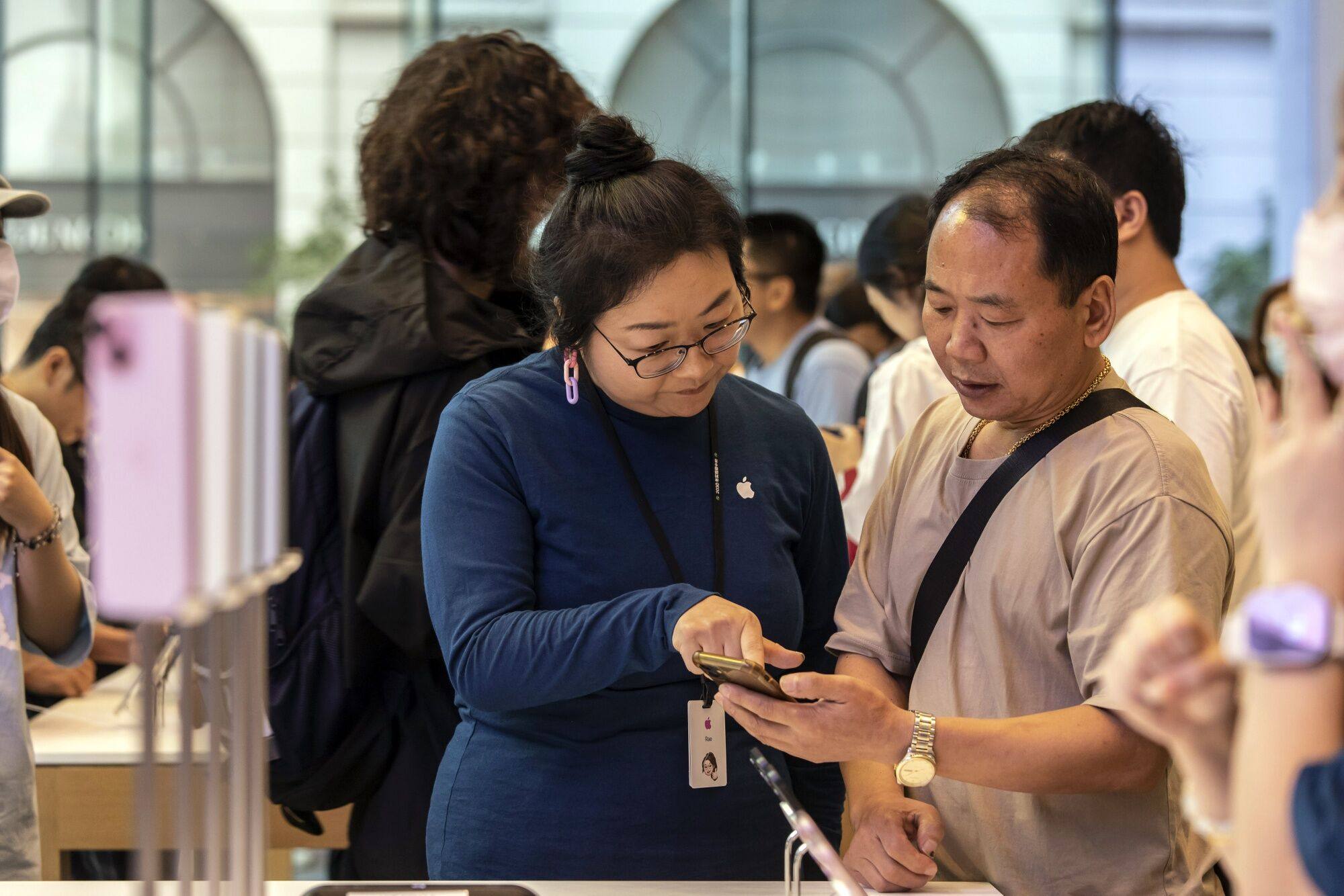
Apple’s iPhone 15 draws long queues in China despite competition from Huawei
- Customers piled into Apple’s flagship stores on Friday, while online delivery platforms were flooded by new orders
- Chinese consumers are increasingly willing to pay for high-quality products, as smartphone prices continue to rise, analysts say
Local customers piled into Apple’s flagship store in Beijing’s famed shopping district of Sanlitun, one of 45 official outlets in the country, to try out the four new models.
On JD Daojia, a grocery delivery platform under e-commerce giant JD.com that said it had partnered up with more than 4,600 Apple resellers, sales of the iPhone 15 series in the first two hours of launch were up 253 per cent from last year’s iPhone 14 series, according to a social media post by affiliate Dada.

A 21-year-old student in Beijing who only gave her surname as Li said she was looking to upgrade to the top-of-the-line iPhone 15 Pro Max from her current iPhone 11 Pro Max.
A 34-year-old film industry worker in Beijing, also surnamed Li, managed to get hold of an iPhone 15 Pro Max by reserving an in-store pickup in Sanlitun through Apple’s website.
Li, previously the owner of an iPhone 14 Pro Max, said he was attracted by the latest premium iPhone’s titanium body, which reduces its weight. “I use a wide range of Apple devices,” he said. “I’m not interested in making a switch to Huawei.”
The premium Pro and Pro Max models, which retail in a range between 7,999 and 13,999 yuan (US$1,095 and US$1,916), also come with what Apple has called “the industry’s first 3-nanometre chip” – the A17 Pro– and a switch to the more universal type-C charging cords.
“Chinese consumers are increasingly willing to pay for high-quality products,” Amber Liu, analyst at research firm Canalys, wrote in a note in July. “The average selling price of smartphones exceeded US$450 last year and is expected to keep rising in the coming quarters.”

Outside the Apple Store in Sanlitun on Friday, a scalper said the Pro and Pro Max series were in popular demand, with new online orders placed on Apple’s official website expected to be shipped no faster than a month later. He was charging a premium of 1,500 yuan for the Pro Max models.
A second-year university student surnamed Peng, who studies materials science in Beijing, said he had yet to make up his mind whether to buy a new iPhone or a Huawei handset.
Peng, who uses an Oppo device, said he had never considered getting a Huawei phone until the Mate 60 series appeared. He said Huawei has made great strides in smartphone performance with its 7-nanometre Kirin chips.
Still, the iPhone may prove too attractive to do without.
“Overall I think Apple products offer a better user experience,” Peng said.

